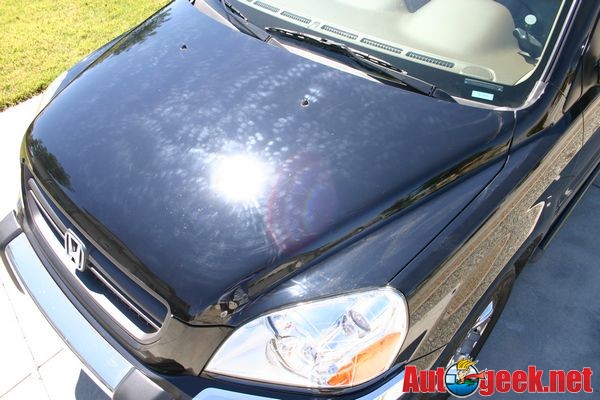This is just my opinion, but the machine always outperforms the human hand but Personal Preference trumps anyone's opinion. If you like to apply a wax by hand then that's the best way. If you prefer to apply by machine, then that's the best way.
Machine
Equal pressure over a larger surface, consistent application motion and speed and the machine never gets tired.
Hand
Uneven pressure over a small surface, inconsistent application motion and speed and the human gets tired.
Risk of
Fingermarks also, not so much with the hand application of a "Finishing Wax" or "Finishing Paint Sealant" or a "Finishing Hybrid", but with anything that offers cleaning or abrading ability.
Fingermarks
Fingermarks, also called
Leopard Spot Effect, are actually a type of
scratch-pattern left in the paint from using a product that's either too aggressive to be used by hand or not safe for clear coat paints.
The marks mimic the shape of your fingertips as they push down on some type of applicator pad while working a product over and into the paint. Finger Marks are inflicted into the paint anytime you stop the movement of the applicator pad for at this moment, as brief as it may be, there tends to be more pressure exerted to the fingertips at the point at which you either stopped moving your hand or changed the direction in which you're moving your hand.
This can happen if you apply products in a circular motion or in a back-and-forth, straight-line motion. It's not the direction of the motion, it's the stopping of motion or the change of direction of motion that the marks are imprinted into the paint.
It can also be caused by using too aggressive of a
material for an applicator, for example a coarse cloth like cheesecloth a red shop rag.
Cheesecloth
In the last year I met a gentleman that purchased some Cheesecloth at a PBE store that said on the package it was safe for clear coat finishes, he used the cheesecloth to apply a hand applied polish to the paint on his brand new black Porsche and ended up instilling finger marks everywhere he rubbed the paint.
Red Shop Rag
We all know you shouldn't apply paint care products to any type of paint using a red shop rag but I've met people that don't understand how easily clear coat paints are scratched and thus don't take the type of applicator or application material they're using into consideration. Automotive repair shops use a lot of shop rags, they're not always read, sometimes they gray or purple looking but they're all made out of fairly coarse material and it's not uncommon for some well-meaning mechanic to wipe or rub something off a car while it's in the shop for repair and in the process instill scratches and finger marks.
Coarse Rubbing Compounds
Old fashioned rubbing compounds in which the abrasives are hard and sharp will also cause Finger Marks when applied by hand. While most rubbing compounds have been reformulated to be safer than old style compounds that were commonly used on single stage paints before the 1980's, there are still zillions of cans of rubbing compound and polishing compound in garages and shops across the country that are used on clear coated cars because that's whats already out in the garage.
This is why you want to do a
Test Spot to the paint anytime you're using products you're unfamiliar with or working on paint you've never worked on before.
If the results from your Test Spot look good, then simply duplicate your process over the rest of the car. If the results from your Test Spot don't look good... aren't you glad you only worked on a small section?
Always read the label of any scratch or swirl mark remover and make sure it states on the label that the product is safe for hand-application to clear coat finishes.
Finger Marks
These were all instilled applying a product that was originally introduced as a hand applied swirl and scratch remover. It was never introduced to the market. It was given to me to test and I tested it on what started out as a flawless finish. It was applied using overlapping circular motions using a clean, soft foam applicator pad. The product was applied over the entire hood using a normal protocol of working small sections at a time, then when moving onto a new section overlapping a little into the previous section until the entire hood had been worked. All work was done in a garage with normal garage lighting and the finger marks did not show up until the car was pulled out into the sun for inspection.

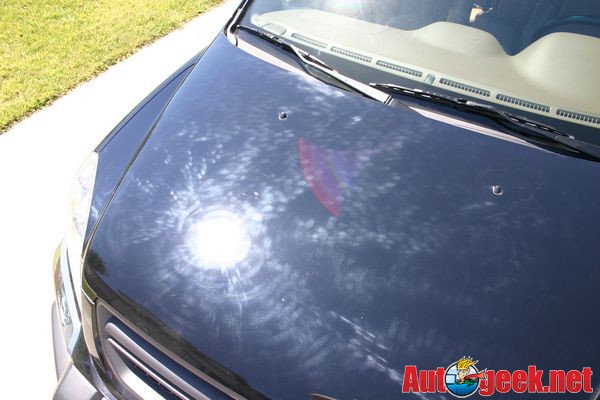
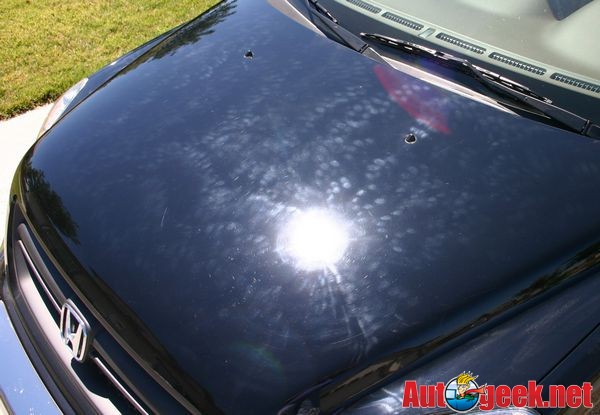

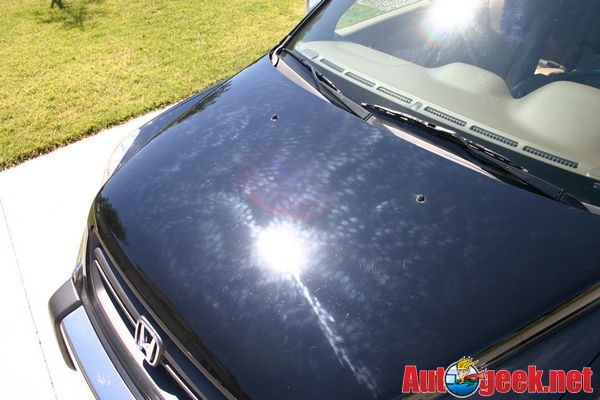
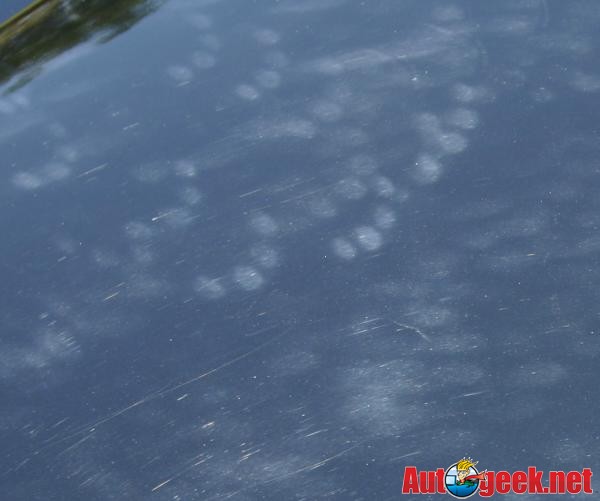
While this test was done purposefully to document with pictures the problems caused by using products that are too abrasive for use by hand on clear coat finishes, it's always a best practice to only do a Test Spot when using a product for the first time, or working a a paint system you are unfamiliar with.
After the finger marks were documented, they were then removed using a DA Polisher and a clear coat safe swirl and scratch remover and the original swirl-free finish was restored to the demo car.

